Best Day Trips from Boston

Ready to unplug from the daily routine and take a day trip from the city? Well, you are in the right place! Day trips from Boston open the door to charming towns, scenic coastlines, and historic landmarks, all just a short drive or train ride from the city. When we moved to the East Coast, Boston instantly made the perfect starting point for quick getaways that feel like a refreshing change of pace. Here are the places I recommend, and I hope you’ll enjoy them too.
Best Day Trips from Boston Under 1 Hour
Looking to escape the city without spending hours on the road? Here are the best day trips from Boston under one hour that we've personally enjoyed.
_16915.jpg)
1. Rockport, MA (50 minutes)
Tucked along the rocky coastline of Cape Ann, this is one of the absolute best day-trip destinations in New England!
We started at Rockport's harbor, where fishing boats bobbed gently in the water and salty sea air instantly slowed everything down, setting the tone for an unhurried day together.
My favorite part was wandering along Bearskin Neck, hand in hand, with weathered shingled buildings, art galleries, and ocean views at every turn—it felt like stepping into a seaside painting.
Downtown Rockport had an effortless charm, with narrow streets, small galleries, and coastal shops that encouraged us to wander without any plan at all.
We shared fresh seafood at a local spot overlooking the water, the kind of simple, perfectly cooked meal that tastes even better when you’re lingering over it together.
I loved browsing the artist studios and tiny boutiques, filled with maritime art, handmade jewelry, and little coastal treasures that felt special and personal.
A quiet highlight was walking along the rocky shoreline just outside town, listening to the waves crash against the granite and enjoying the kind of peaceful silence you only find by the sea.
We also paused at Motif No. 1, learning why this iconic red fishing shack has inspired generations of artists—it gave the town an artistic soul I didn’t expect to feel so deeply.
- Location: Northeastern Massachusetts, on Cape Ann, northeast of Gloucester along the Atlantic coast
- Location: Map & Directions
What I loved best:
Local seafood was exceptional here and my favorite highlight ...lobster rolls, fried clams, and chowder tasted even better with ocean views, making it one of the coolest foodie getaways near Boston.
_16915.jpg)
2. Plymouth, MA (50 minutes)
We absolutely love Plymouth, and have been many times. To me, Plymouth is one of those places that feels familiar before you even arrive. I grew up hearing about it in history class, but visiting in person was a completely different experience.
Just about an hour south of Boston, Plymouth blends deep American history with charming waterfront scenery, making it an easy and rewarding day trip.
What really surprised me about Plymouth is how much there is beyond the famous rock. Yes, Plymouth Rock is iconic, but the town itself is full of character. You’ll find walkable streets, historic homes, a lively harbor, and plenty of spots to stop for seafood or coffee with a view. It feels relaxed, coastal, and quietly historic all at once.
One of the highlights of visiting Plymouth is how immersive the history feels. Walking along the waterfront or through the historic district, it’s easy to imagine what life might have been like centuries ago.
Attractions like Plimoth Patuxet Museums bring the story of the Pilgrims and the Wampanoag people to life in a way that’s engaging rather than textbook-dry. It’s educational, but still genuinely fun.
Getting to Plymouth is simple. If you’re driving, the trip from Boston usually takes about an hour, depending on traffic. I recommend leaving the city mid-morning to avoid rush hour and give yourself a full afternoon to explore. Parking is straightforward, especially near the waterfront and historic sites.
If you don’t want to drive, Plymouth is also accessible by public transportation. The MBTA Commuter Rail runs from Boston to Kingston, which is about a 10–15 minute taxi or rideshare from downtown Plymouth. It’s an easy option if you’re looking for a stress-free way to visit without a car.
Another great way to experience Plymouth is with an guided tour, especially if you’re short on time or want deeper historical context. Usually, guided tours take care of transportation and logistics while giving you insights you might miss on your own.
What I loved best:
My favorite hidden gem was Brewster Gardens, a quiet green space near downtown where I could relax, take photos of the flowers in bloom, and just soak up the peaceful atmosphere.
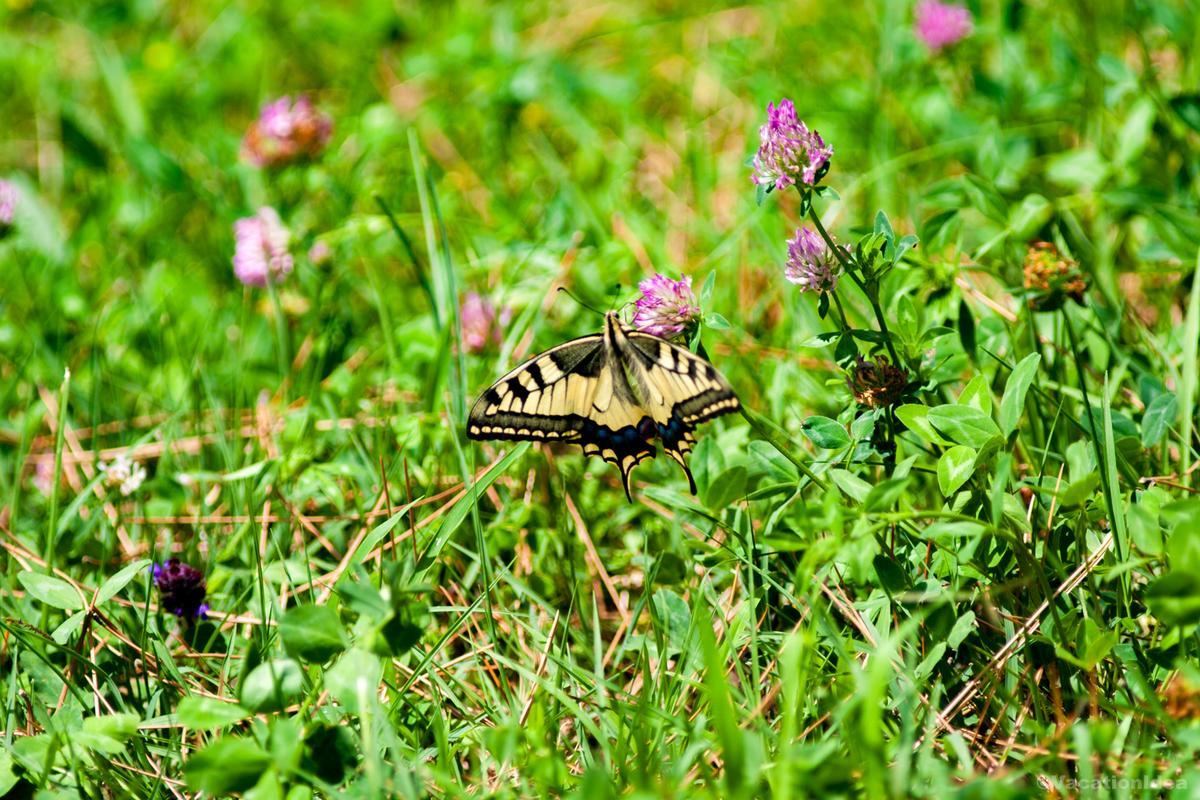
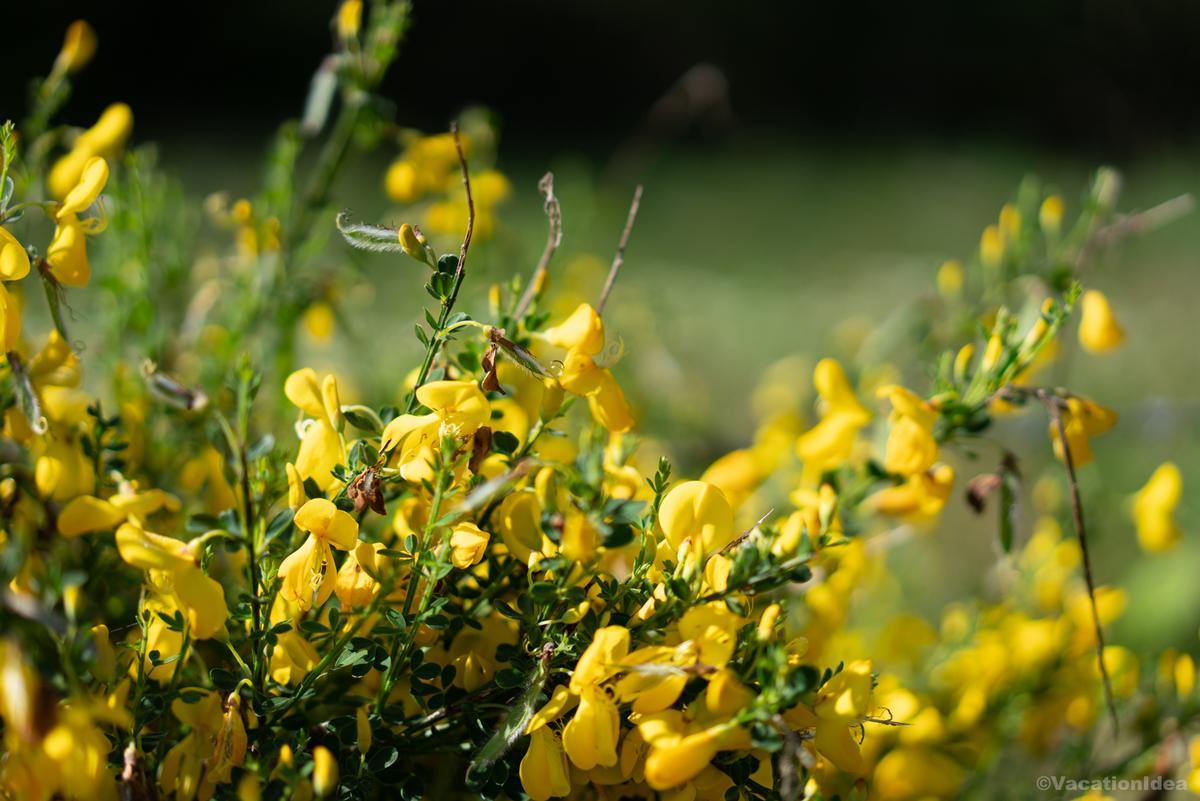
3. New England Botanic Garden at Tower Hill - 50 minutes
This garden was one of my absolute favorite places to escape into nature—it’s about an hour west of Boston, making it the perfect spontaneous day trip that didn't take any planning.
We started the day driving west toward Boylston, Massachusetts, which is about an hour from Boston, and the ride itself already felt like a mini weekend getaway.
First thing we did was grab our tickets and just stood there for a second taking it all in since the views of Mount Wachusett were spectacular and gave the whole place this magic feeling.
We wandered into the conservatories first, which was my favorite idea because the warm air, great plants, and unusual flowers felt like an instant escape.
Next we followed the paths outside, and this is where the experience really became one of the best, since every turn felt unique and interesting.
We slowly explored the gardens in order, from the formal lawns to the woodland trails, and it felt joyful and exciting without being overwhelming.
Some spots felt romantic while others were perfect for a family day, which made it such an underrated and affordable option near Boston.
We stopped constantly to take photos, and you can see in my photos how colorful and alive everything looked that day.
After that we found a quiet bench and just relaxed, which honestly was one of the most amazing parts of the whole visit.
Before leaving we checked out the gift shop and café, a brilliant idea and a cool way to end the trip.
Driving back toward Boston, Chris, our son and I all agreed this was one of the absolute best, most underrated day trips and a dream experience we’ll totally do again.
- Location: Central Massachusetts, in Boylston, overlooking the Wachusett Reservoir near Worcester
- Location: Map & Directions
What I loved best:
Orangerie and Limonaia with an exceptional collection of citrus and exotic plants that made me feel like I’d stepped into a different world.
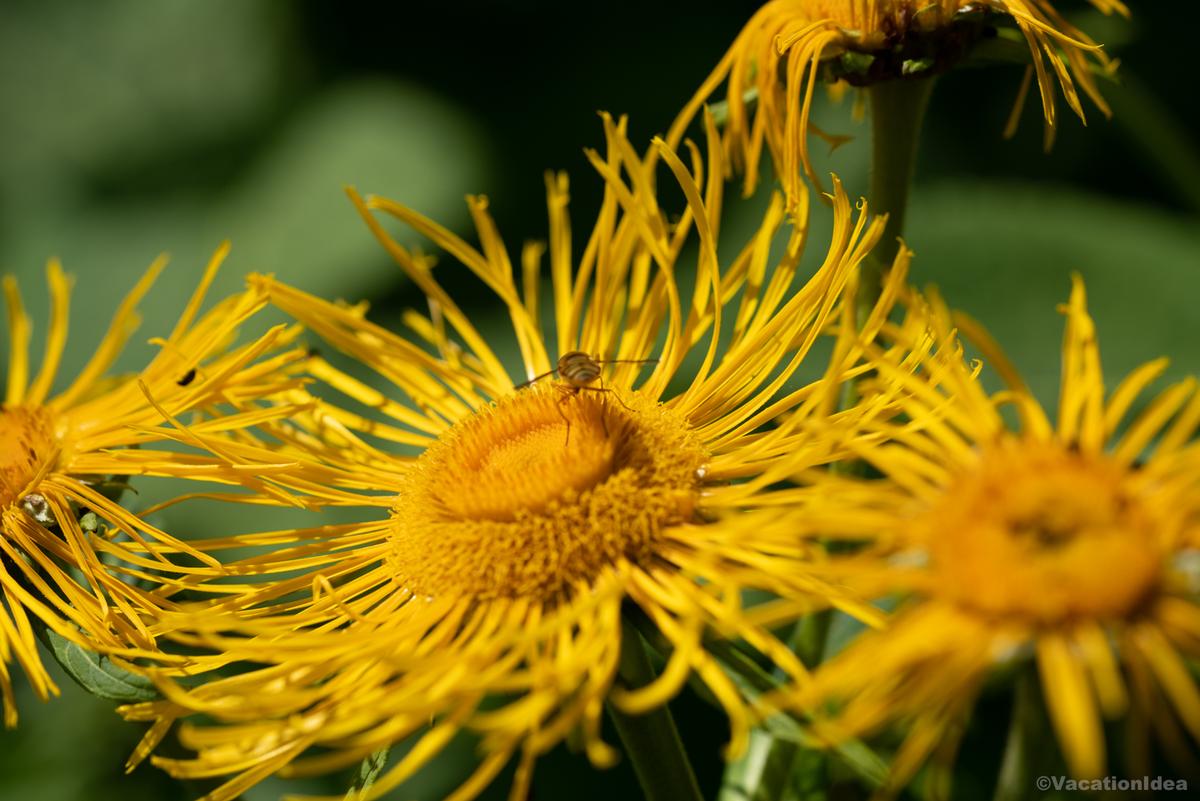
4. The Butterfly Place in Westford, MA (45 minutes from Boston)
This is one of the most delightful, unique little escapes I’ve discovered—it’s about 40 miles north of Boston and makes for a magical and affordable day trip.
I loved stepping into this indoor tropical sanctuary, where up to 500 butterflies from around the world flutter freely among winding pathways and lush blooms—it felt like walking into my favorite dreamscape.
It’s such a peaceful and joyful spot—visitors often pause on benches to watch butterflies sip nectar, bask in sunshine, or even land gently on their shoulders—a brilliant idea for both nature lovers and anyone seeking a moment of calm.
Kids and adults alike rave about the educational exhibits—the “show and tell bench,” the displays showcasing eggs, caterpillars, cocoons, and chrysalides, and the 15-minute video teaching the butterfly life cycle—making it an amazing, interactive learning experience.
One of my favorite underrated details: it's home not just to butterflies but also koi ponds, frisky finches, and adorable quail birds—all adding to the vibrant, unexpected charm of the experience.
We found the admission allows you to come and go throughout the day so you can linger, explore nearby cafés, or simply let the little ones wander at their own pace.
- Location: Map & Directions
What I loved best:
The outdoor picnic area where we had an amazing family picnic surrounded by natural beauty was my favorite highlight!
Best Day Trips 1 to 2 Hours from Boston
If you’re ready to venture a little farther from the city, Boston is surrounded by incredible destinations that are still easy to reach in a day.

5. Fuller Gardens, North Hampton, NH - Just over an hour from Boston
This was one of the most beautiful and underrated hidden gems I’ve discovered for a day trip from Boston, sitting just about an hour north along the scenic seacoast.
I loved walking through the formal rose gardens, where thousands of vibrant blooms created a magical and joyful atmosphere that felt like stepping into a living painting.
We had the best time exploring the Japanese Garden, a peaceful oasis with koi ponds, stone lanterns, and winding paths that added such a unique and calming experience to the visit.
My favorite part was the Conservatory, filled with exotic plants and flowers that made the whole place feel even more unusual and enchanting.
I thought the garden’s layout was spectacular—neatly manicured paths, bursts of color at every turn, and ocean breezes drifting in from nearby made it one of the coolest outdoor experiences near the coast.
One of the absolute best surprises was how affordable the entry was, considering how exceptional and well-maintained the grounds are—it felt like a brilliant idea for both families and romantic getaways.
- Location: North Hampton, New Hampshire, near the seacoast just south of Portsmouth
- Location: Map & Directions
What I loved best:
Quiet corners where I could just sit, relax, and soak in the peaceful surroundings, which made it a dream escape from the busyness of the city.
_16915.jpg)
6. Kennebunkport (1.5 hours)
We planned one of the best day trips from Boston and drove north about 90 minutes to Kennebunkport, Maine, which already felt like a dream getaway.
First thing we did was grab coffee near Dock Square and just wander, this little coastal town felt like a hidden gem and super welcoming.
Walking along the harbor was such an amazing experience, boats bobbing everywhere, salty air, and that classic New England magic you see in my photos.
We spent some time browsing the most interesting local shops and galleries, which honestly felt underrated and very relaxed compared to busier towns.
After that we headed to Walker’s Point to see the Bush compound from afar, a cool and unusual stop that felt kind of iconic.
Lunch was one of the absolute best parts. We shared lobster rolls by the water and it was my favorite meal of the weekend.
Later we drove to Goose Rocks Beach nearby, which is one of the most beautiful and family friendly beaches in the area.
The sand was soft, the water calm, and it felt like a spectacular place for a romantic or family afternoon escape.
We laid out towels, talked for hours, and honestly did nothing which felt like the best experience after a busy Boston week.
Before leaving we squeezed in a coastal walk, the views were vibrant and peaceful and felt like a brilliant idea last minute.
As the sun started setting we headed back through town, stopping for ice cream which was joyful and surprisingly affordable.
What I loved best:
I found the scenic boat tour to be one of the absolute best ways to experience the coastline—cruising past lighthouses, seals, and rocky shores felt dreamy and unique.
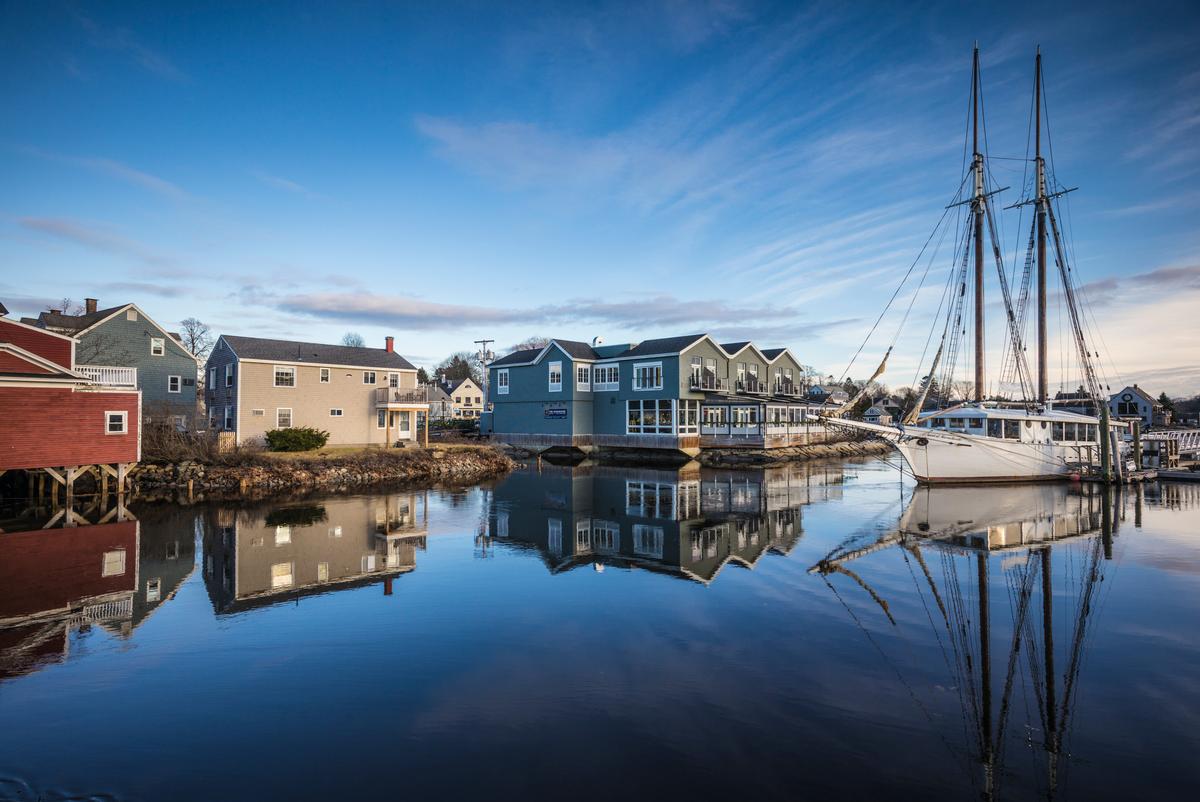
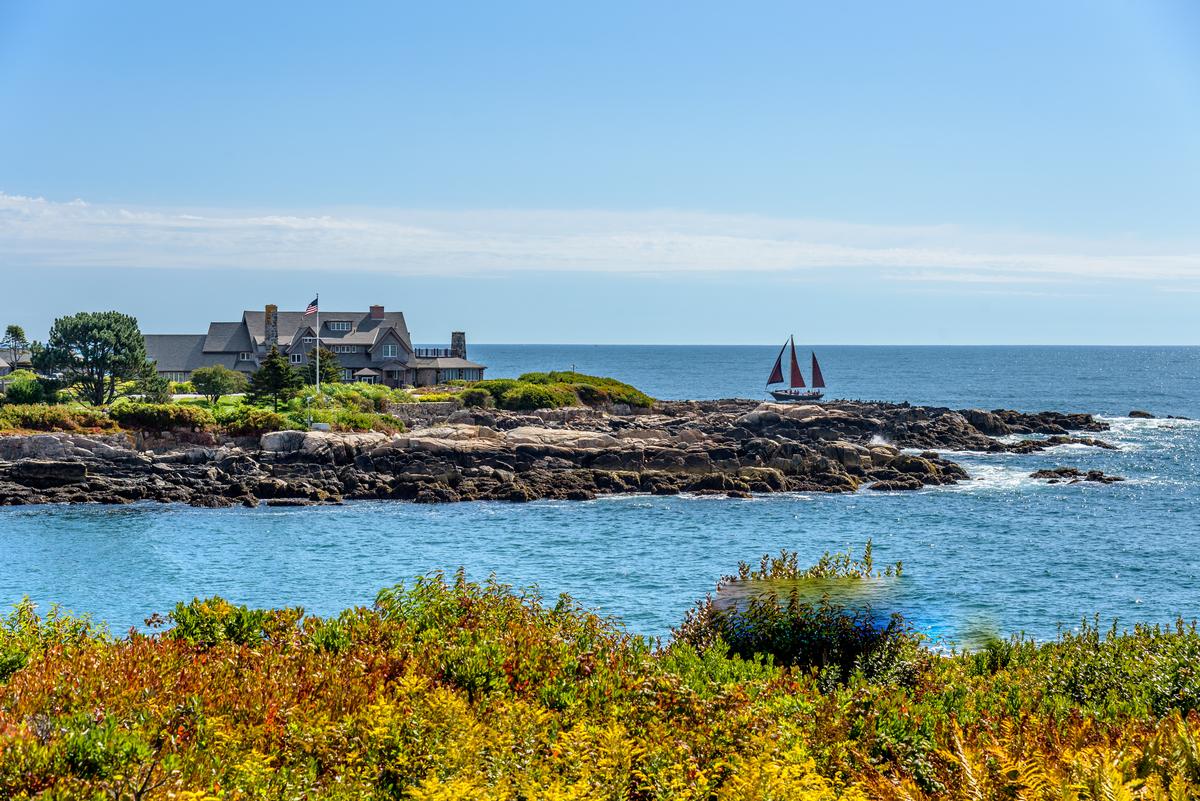

7. Portsmouth, NH - 1 hour 10 minutes from Boston
This place was one of the absolute best day trips from Boston, just about an hour north, and it’s the kind of place that always leaves me feeling joyful and inspired.
I loved wandering through the historic downtown, where brick-lined streets, colorful boutiques, and vibrant cafés created such a cool and lively atmosphere.
We had the best time exploring the Strawbery Banke Museum, an underrated gem that brought four centuries of history to life with costumed interpreters and beautifully preserved homes.
One of my favorite hidden spots was Prescott Park, a gorgeous waterfront park filled with flowers, fountains, and spectacular river views that felt both romantic and family-friendly.
I thought the food scene was amazing—whether it was fresh lobster rolls by the water or a cozy coffee shop tucked into a historic building, every meal felt like a special experience.
- Location: Seacoast New Hampshire, in Rockingham County, along the Piscataqua River near the Maine border
- Location: Map & Directions
What I loved best:
For me, Portsmouth, NH is one of the best day trips from Boston because it's historic and unique!
Discovering the Portsmouth Brewery was my personal highlight, which was such a fun and vibrant place to end the day with craft beers and local bites.
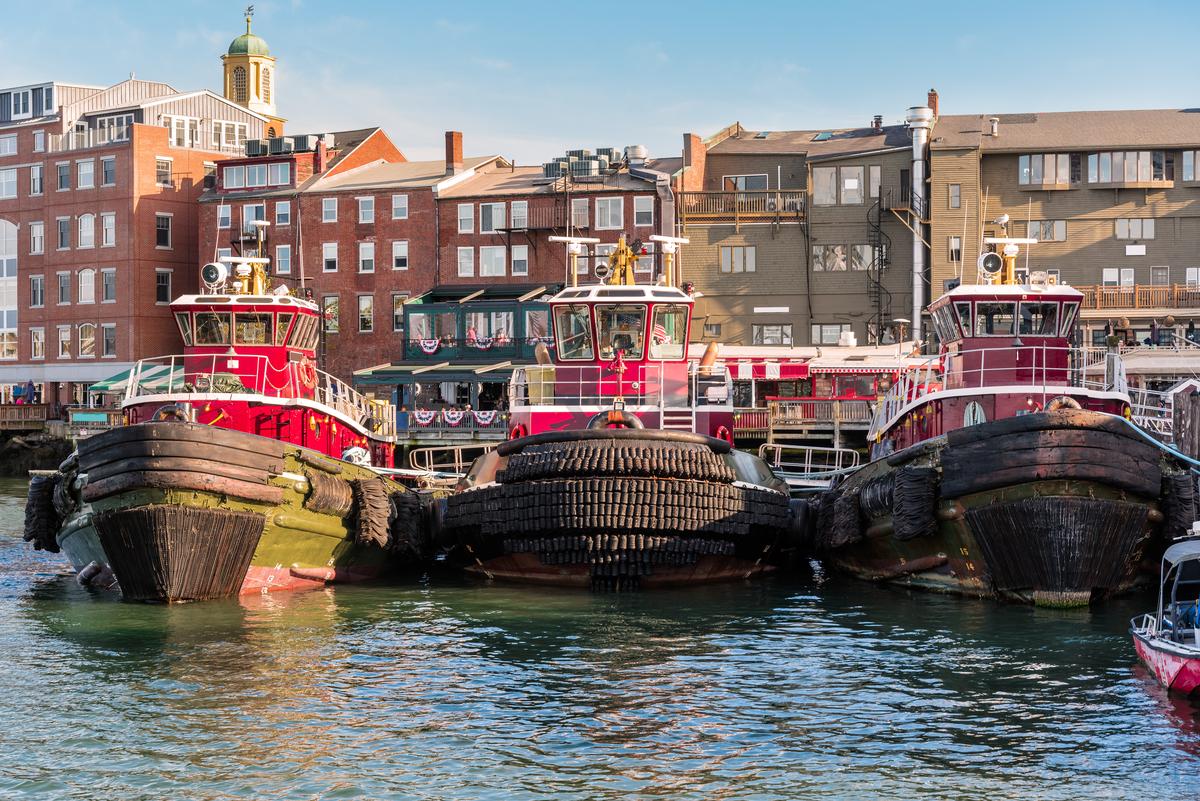
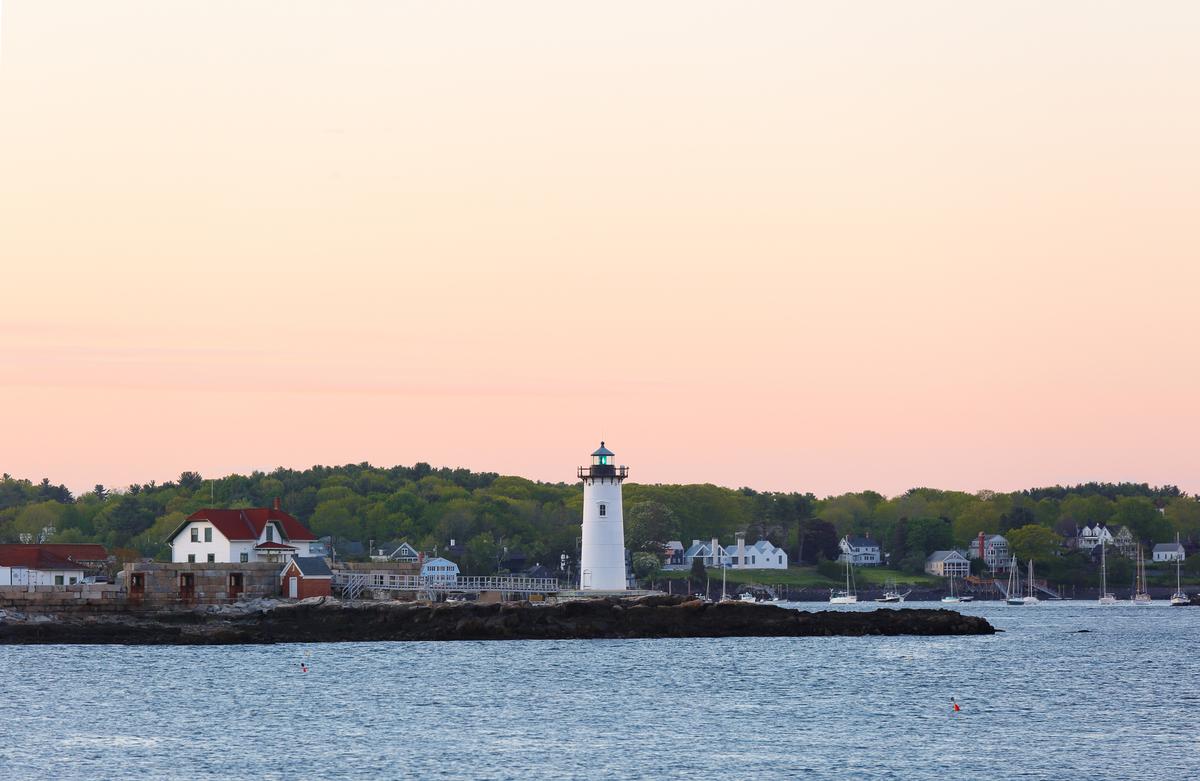

8. Cape Cod National Seashore - 1 hour 45 minutes by car from Boston
One of my favorite day trips from Boston has to be the this lovely natural place. Since moving to the East Coast, I've loved the feeling of driving across the bridges onto Cape Cod, where the landscape shifts into something so vibrant and magical that it feels like stepping into a dream.
We started our day with a slow walk along Coast Guard Beach, watching the waves roll in as seabirds skimmed the shoreline. The wide, open stretch of sand made it easy to wander side by side without feeling crowded.
One of my favorite moments was stopping at a small overlook where we sat quietly on a weathered bench, sipping coffee and listening to the ocean—it was the perfect, unhurried start to the day.
We explored the walking trails that wind through pine forests and salt marshes, pausing often to read trail signs and point out wildlife hidden in the grasses.
Later, we drove out to one of the historic lighthouses, where the stark white tower against the blue sky felt both timeless and grounding. Standing there together, the breeze coming off the Atlantic, made the moment feel simple and special.
In the afternoon, we found a quieter beach tucked away from the main access points, where we laid out a blanket, shared snacks, and let time pass without checking the clock.
I loved how the seashore balanced openness and solitude—expansive views, but never overwhelming—making it feel like a place meant for slowing down and reconnecting. Before leaving, we stopped at a nearby visitor center and gift shop, picking up local postcards and small souvenirs to remember the day.
What I loved best:
Ending the evening with a relaxed seafood dinner in a nearby Cape town, where fresh fish, candlelight, and ocean air made the perfect close to a day that felt both grounding and quietly romantic.

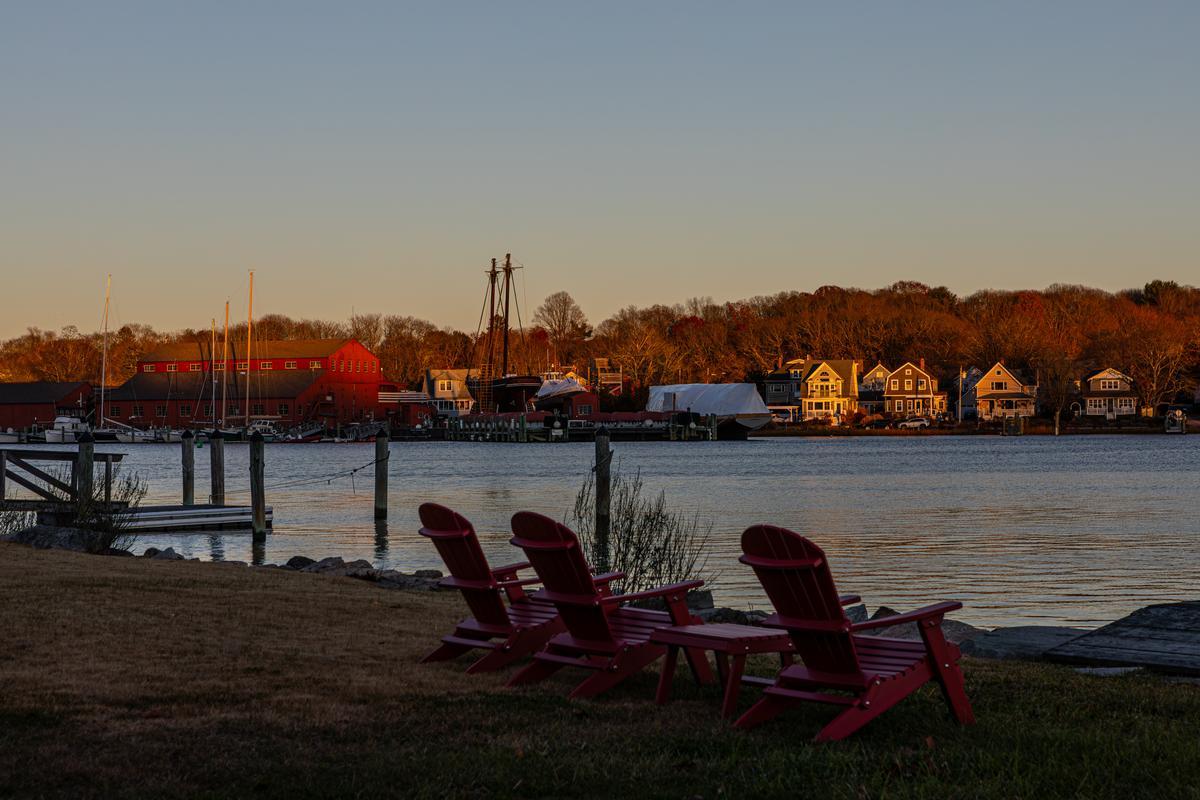
9. Stonington Borough - 2 hours from Boston
This destination turned out to be one of the most amazing hidden gems I’ve found for a quick getaway from Boston, sitting about two hours south near the Rhode Island border.
We started by driving down toward southeastern Connecticut, near Mystic, and as soon as we crossed into the borough everything slowed down in the best way.
First thing we did was park near the harbor and walk along the waterfront, which already felt like a dream with sailboats bobbing and salty air everywhere.
We wandered along the quiet streets next. I thought that the historic homes, stone walls, and ocean views made this experience feel truly unique and underrated.
After that we stopped for coffee, which was a simple but joyful moment and honestly one of my favorite parts of the morning.
We kept walking toward the lighthouse, and that short stroll ended up being one of the most scenic and romantic walks Chris and I've done in New England.
The lighthouse itself felt like a cool, classic stop.
Later we explored the small shops and galleries, which were affordable, interesting, and full of local character.
We grabbed lunch by the water, and sitting there watching boats pass by felt like magic and such a relaxing weekend getaway vibe.
After eating we just wandered with no plan, which is honestly the best way to experience Stonington Borough.
- Location: Map & Directions
What I loved best:
I thought the Stonington Village Farmers' Market was one of the best surprises (if you can catch it!). It's an exciting place filled with fresh produce, baked goods, and local crafts that added so much character to my visit.
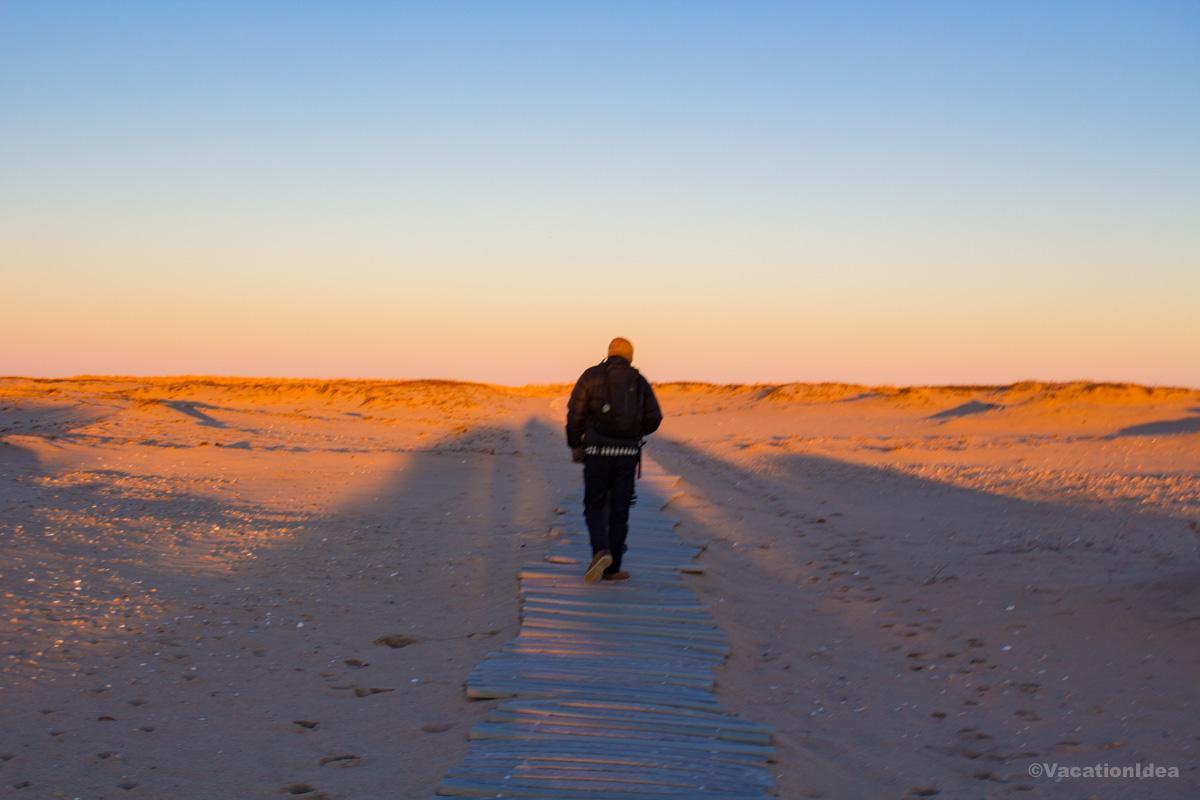
Booking Checklist
1. Book Your Flight - I use Expedia because I like their mobile app with my itinerary. They've helped me re-book flights on many occasions. Once you reach their Gold tier, support is especially good.
2. Book Your Hotel - I use Booking.com or Expedia, depending on my destination.
3. Book Your Rental Car - I use Expedia.
4. Book your tours on Viator or Get Your Guide.
5. If you are planning to visit more than three national parks in the next 12 months, buy the America the Beautiful Pass.
